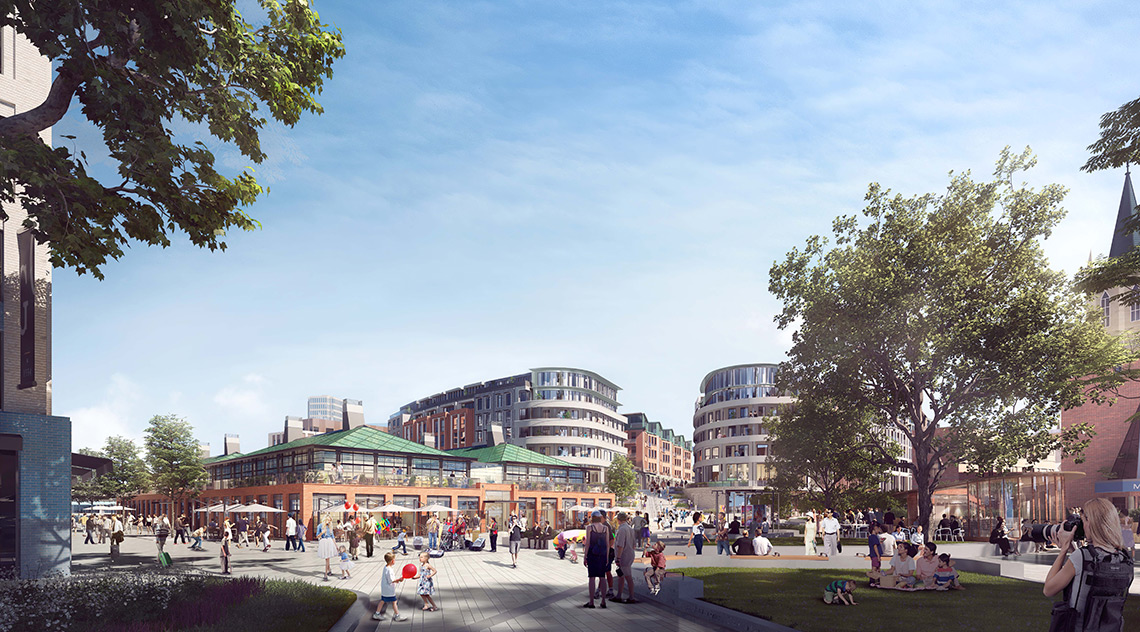Sustainable financing
Why non-retail regeneration provides better funding options in an uncertain retail world
As the face of the retail supply adapts to represent consumer habits, a number of barriers holding back change have been addressed. Investors looking to reduce their retail exposure have never been in a better position to take advantage of the opportunity to re-position their assets for the alternatives market to maximise long-term value of the assets they own and drive regeneration in our towns and cities.
Sustainable leases
The retail landscape has changed forever. Structural changes mean that there just isn’t the demand for the amount physical retail space that we have been used to, as online shopping becomes more convenient, struggling or poorly run retailers fall into administration and occupiers ‘rightsize’ their town centre and out-of-town footprint. Leases are also moving away from upwards only 10 years that have been common in the past, providing less long-term security for landlords. The partnership between owner and occupier has to become more operational and entrepreneurial.
Investors are now shifting the weighting of their portfolios away from retail to the alternative sectors, where long leases can be secured providing more secure, sustainable income for landlords.
Regeneration and the diversification this can bring is also welcome as the mix of occupiers from councils, educational institutions, healthcare, BTR, hotel, last mile logistics, retirement living, and more, not only provide security for investors, but a vibrant mix of new occupiers and employers to our currently retail heavy high streets. These occupiers can sign leases of 30+ years compared to 3-5 year retail leases.
Additionally, major planning changes were announced in 2020 for those owning, occupying, funding or developing commercial and business premises. The Use Classes Order makes it easier to change uses of retail to alternative uses, enabling new flexibility which aims to encourage vibrant, mixed use town and city centres where we can live, work and shop. The previous planning system which had become too challenging, restricted the adaptability of the high street and hampered the process of regeneration.
Sustainable funding
Retail has been a dirty word for investors of late, but private sector funders are starting to come around to the idea that development that includes retail places at their core does not have to mean a weak proposition when diversified and rightsized to meet specific local need.
Alternative uses are exactly what institutional investors continue to crave, opening up significantly more debt funding options than single-use retail assets, which is a huge bonus for cash strapped landlords. With council involvement there is an increasing array of grants, funding and planning support and public sector investment may well be needed in the majority of the towns across the country. However, securing pre-lets on a variety of tenure would provide greater confidence to banks and councils to take on long-term finance and therefore a proactive private sector approach remains instrumental.
Gravesend Old George Square regeneration is a prime example where Reef and the local council worked together with Aviva to create and fund a scheme that would provide much needed diversification in the town centretown centre, including residential accommodation with a mix of tenures. This not only reduced the amount of retail, it created the places that the residents want; a place they can be proud of and safe in.
There are 15 other types of funding options for regeneration from the Future High Street Fund, Getting Building Fund and Public Works Loan Board just for starters to assist with development viability. Institutional investors also need to keep the faith. These types of public and private partnerships are valuable because each party bring their own expertise and the risks are shared.
Sustainable investment
The best retail investments in the future will be those that are connected to their places, are environmentally and economically sustainable, and that have secure income from diverse occupants; developments that stand the test of time. However, many of existing retail assets have thrived for 50 years, but are now no longer suitable to modern needs. An improved sustainable offer will meet the challenges of the next 50 years, providing both financial and social returns.
For landlords who have come to terms with the underlying value of their assets and understand the viability for redevelopment, repurposing and regeneration, there is huge opportunity, especially as many are looking to reduce their retail holdings and weightings. While there is the development risk to navigate the long-term, rewards and more sustainable income streams are sure to outweigh the pain some may associate in being involved with development projects.
Covid has reinforced the power of community. Consumer and occupational loyalty is arguably one of the most important barometers for sustainable places. It was happening already, but tailoring developments to meet the multiple needs of the people they serve and build social value is how you ensure occupational demand for all uses, and with it sustainable income and investment.


